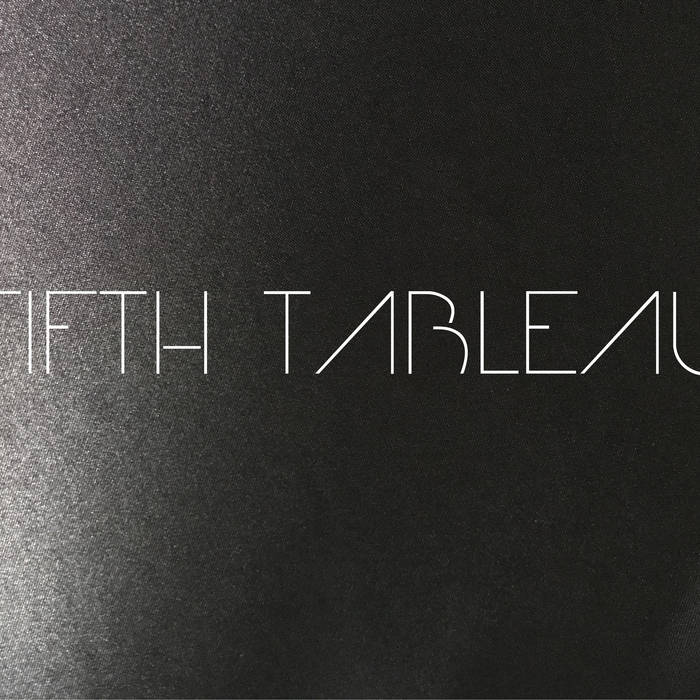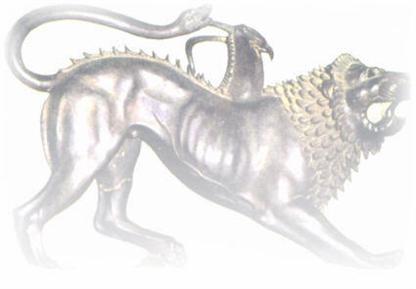
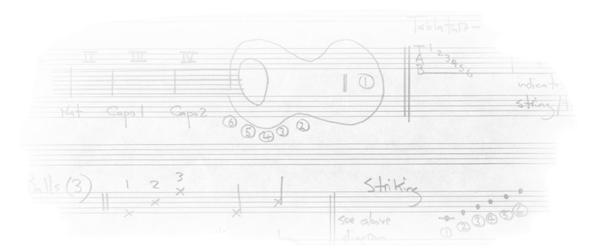
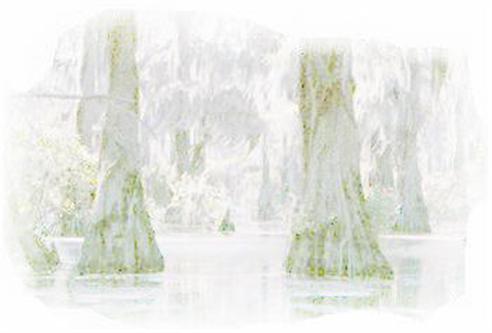
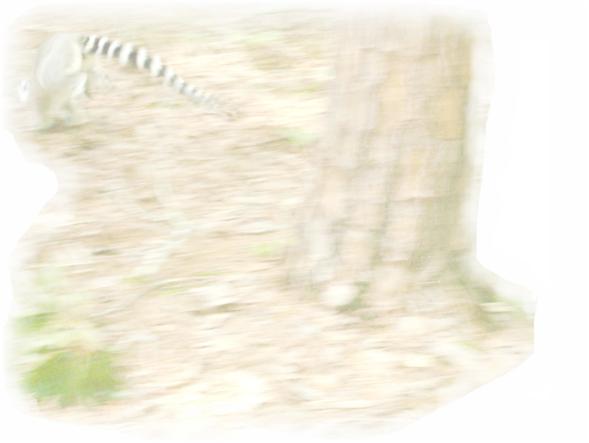
Echoes of Lemurs
2006-7
5-Channel Sound
Echoes of Lemurs explores relationships—evolutionary and ecological—among various mammals by examining and transforming their vocalizations. The focus is on primates—howler monkeys, chimps, humans, and especially lemurs, who are at the heart of the entire project, being the closest thing to a "living fossil" of the earliest primates, and acting as a sonic pivot point between primates and other mammals. Furthermore, lemurs are among the most elaborately, diversely vocal of all nonhuman primates, the ring-tailed lemur alone possessing some 22 distinct adult vocalizations, with significant modulatory, combinatorial, and contextual variability. Humans are represented in two forms: "Natural," paralinguistic vocalizations (crying babies, sexual sounds) and cultivated or "extended" vocalizations—but no speaking or singing. The piece is concerned with vocal expressivity and communication systems that are not explicitly linguistic or musical in the usual sense.
I conducted background research, observed animals, and made source recordings for this piece at the Duke University Lemur Center. I received considerable assistance from biologist Joseph Macedonia, who provided articles and additional recordings, and provided invaluable assistance in interpreting vocalizations.
.............................................................
Chris Mercer and Bert Turetzky: Collaboration
2006
2-Channel Sound
Bert Turetzky—Bass, voice, friction sticks, motor boat
Chris Mercer—Recording, digital editing and processing, handheld tape recorder
Bert Turetzky and I first collaborated in 2003-4 on a composition for prepared bass called Recumbent Bass. That piece, with its elaborate and rather fragile setup, took a full year of weekly sessions to realize and record. And after such an extended period immersed in one another's sound worlds, we formed the idea to create an extended work together, in which each could do his thing to the fullest. This album is the result of that collaboration.
The source materials were recorded during a series of sunny sessions at Turetzky's home in Del Mar, California. These materials became the basis for a cycle of electroacoustic compositions realized in Mercer's personal studio in Chicago. The result is sometimes a small combo of Berts, sometimes a concerto for Bert and bass-derived orchestra, sometimes an electroacoustic fantasy with traces of bass DNA, and sometimes all of the above and more. Perhaps the purest moment of collaboration on the album is "Handheld Rides Again," a genuine real-time composition, presented exactly as it occurred, unprocessed, unadulterated.
This album is intended as an "album" in the truest sense—a series of statements that are all of a piece, that add up to a coherent sequential listening experience. Hopefully, the listener will find threads and connections that reward repeated listens…
.............................................................
Swampoid
2007
Five performers, 2-channel tape
Swampoid uses a set of amplified instruments—most of which were designed by the composer, a few of which are found objects—to simulate a swamp environment. The focus is on animal communication. Some of the materials are modeled directly on specific animal calls: Field crickets, bullfrogs, and American alligator mating calls. Others are indirect or "fantastic," while still being recognizably birdlike or insectoid. Interactions between calls are modeled on specific natural events. For example, early in the piece a pair of creatures exchange territorial calls that increase in intensity to the point of alarm; at the midpoint of the piece, a predator bird lands and cries out, causing a defensive cessation of insect and frog calls, and eliciting a few alarm calls. The five performers are accompanied by a tape part consisting entirely of processed cicada recordings made by the composer in eastern North Carolina. The piece was strongly influenced by the field recordings of Bernie Krause and David Dunn and, especially, the exquisite recordings of swamps in the southeastern United States by Lang Elliott and Ted Mack. It was also influenced in no small part by the composer's own extensive experience in the swampy and marshy regions of the American south.
.............................................................
A Snowball's Second Chance
2005
Four Percussionists or Guitarists
A sequel of sorts to A Snowball's Chance for guitar and tape (2003-4). The title refers to a carefully mitigated progressive accumulation of sonic objects/behaviors throughout the course of the work. Even to the very end, new materials are still being introduced and assimilated at predetermined time intervals. On the one hand, materials, once introduced, must remain "in play" throughout the remainder of the work, forcing an increasing motivic-behavioral congestion; on the other hand, factor such as fragmentation, recombination, cross-synthesis, rules governing the temporary disappearance of sonic objects, and the inherent familial inter-relatedness of materials work against the perception of the work as merely a "building up" of musical threads or as a simple increase in global density.
The guitars are treated here as percussion instruments, placed on their backs, firmly fixed to tables. In addition to a wide variety of more "conventional" extended playing techniques, the piece calls for a variety of special implements including brushes, combs, coins, bows, alcohol-soaked rags, and a custom egg-beater device. The guitars are also prepared with multiple capos, and two of them are restrung for extreme scordaturas.
.............................................................
Rally
1994-2005
2-Channel Sound
I collected and developed vocal and "organic" sounds for over a decade for eventual inclusion in a vocalization etude or creature feature. Rally, in which those materials finally found a home, is an exploration of the relationship between human, animal, and synthetic vocalizations—ranging in scope from large crowd or herd scenes to "inside-the-throat" close-ups—and an attempt at a kind of sonic creature design. Pitch, cadence and vowel formant information derived from a number of speakers, animals, and even "vocal-sounding" organic or inanimate objects are used to drive various synthesis and re-synthesis processes. For example, a human being's vowel formants filter the already vaguely speech-like sound of crushed seaweed; the air in the voice is extracted and cross-synthesized with a pig; pitch-detection extracts one voice's "melodic" component which is then used to control the granulation parameters of another voice. Among the human beings whose voices were analyzed for this piece are: Noam Chomsky, Harry Partch, Henry Cowell, Langston Hughes, William Carlos Williams, and a feisty southern televangelist.
.............................................................
Call Repertoire
2004/2008
8-Channel Sound
Call Repertoire originated in 2004 as a work for two percussionists, 8-channel live electronics, and tape. The live version was performed by Pascal Pons and Domenico Martinez of Ensemble Surplus, with digital processing developed at Experimentalstudio SWR. The percussionists performed on a set of the composer's custom acoustic instruments, contact- and close-miked for amplification, live processing, and 8-channel spatialization. The present version incorporates all the original tape parts, a live multitrack recording, and the composer's own recordings.
The title borrows from the study of animal communication and refers to the set of calls emitted by a given species. The work is a musical exploration of bioacoustic communication heard through filters of wood, rubber, plastic, and metal. Unmistakable growls, moans, squeals, glottal pulses, and evocations of stridulation emerge from the homemade instrumentarium, describing a distinctly "communicative" sound world, with implied exchanges between actors in some unseen biodrama.
.............................................................
Untitled
2000-1
Accordion, Banjo, Piano, and Percussion
Untitled takes up the challenge of musique concrète instrumentale as first explored by Helmut Lachenmann in the late 60s, but does so in a way that is less concerned with a critique of traditional instruments than with developing the original Schaefferian "syntactic" approach to tape composition and bringing it into the context of live instrumental music. The piece grapples with the notion of "reduced listening" in which sound objects are organized primarily by their intrinsic morphological features rather than by their extra-musical significance. Such an approach takes on a strange new meaning when it occurs directly in front of an audience (as opposed to being heard from "behind the curtain" of loudspeakers) and when players must perform the actions precisely in real time (as opposed to being edited together in the studio).
The only electronic components in the piece are a few battery-powered fans and a handheld tape recorder. The tape recorder is used to produce small amplifier feedback throughout the piece; however, in the course of performing the feedback, the performer is also producing a "tape piece" during the performance. The work ends with playback of this newly produced tape piece, an echo of the work's musical origins in the classical tape studio.
Premiered by the Nonsense Company.

Recumbent Bass
2003
Prepared Bass
The title is literal: The bass is laid on its back on a table, surrounded by supplementary noise-generating devices, such as a small fan mounted on a microphone stand, buzzers attached by strings to the table, music stands loaded with a variety unusual implements (suspended copper pipes, small fans, buzzers, wooden dowels, thimbles). Some have described the scene as having a "surgical" quality; though this extra-musical aspect was unintentional, there is, in a sense, a "dissection" of the bass going on here.
The piece explores a spectrum of sound generation techniques:
Near-direct—e.g. simply bowing and plucking the strings; it is only nearly direct because the strings have been prepared with alligator clips and other devices. Some semblance of conventional playing technique and bass sound, however, is preserved.
Secondary—e.g. the plucked string causes an attached metallic object to buzz against another part of the instrument; the conventional technique gives rise to a secondary sound generation technique.
Forced or applied—e.g. the mounted fan continuously vibrates a string; the connection between the sound generator and conventional playing technique is partially severed.
Peripheral—e.g. the buzzers vibrate on the body of the instrument with minimal performer involvement; here, the connection between sound generation and conventional playing technique is totally severed. The instrument acts only as a surface/resonator and the performer acts only to maintain otherwise independent activity.
These are only the primary "nodes" on the spectrum. Many in-between and ambiguous states appear as well. Overall the piece moves from the near-direct to the peripheral, then rapidly back to a warped form of the direct. In the final section—a plot twist of sorts—the performer attempts manually (directly) to emulate the (peripheral) buzzer behaviors heard a few minutes earlier.
The piece was written for and dedicated to Bert Turetzky.
.............................................................
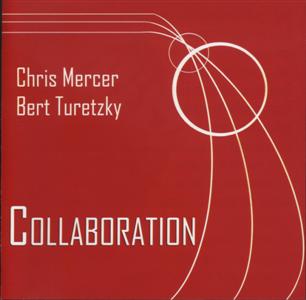
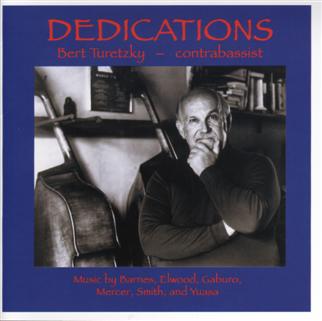
A Snowball's Chance
2003-4
Guitar and Tape
As the title suggests, the form of A Snowball's Chance is that of a misshapen snowballing of sonic-behavioral materials that grow more fragmented and grainy as they accumulate. The dense monolith at the opening of the work eventually dissolves into an array of rapidly alternating, morphing, or uneasily coexisting sonic objects. The guitar and tape parts engage in this process in parallel with more or less separate sets of materials, though there are many discernable points of intersection and frequent examples of overt counterpoint or cross-synthesis. The tape part derives entirely from guitar sounds produced in collaboration with Colin McAllister. Although some of the sounds have been substantially processed, a large number appear unadulterated (or minimally edited/manipulated a la magnetic tape music), the original acoustic sound phenomena having been sufficiently realized and captured in the studio. The sound production techniques found throughout the piece include: bowing the strings, scraping the strings with the nails (where speed controls pitch), use of freely vibrating alligator clip, extensive percussion on the body of the instrument, and a nail file on the strings. Additionally, the guitar is tuned in ascending quarter-tones, so that the open strings produce a microtonal cluster.
Purchase the CD Solos and Duos for Guitar by Colin McAllister and Derek Keller at Old King Cole Records
.............................................................
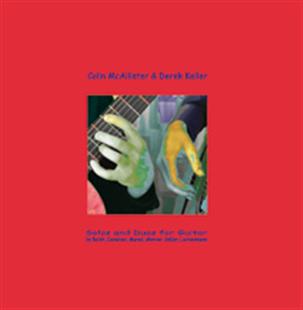
The Audible Phylogeny of Lemurs
2008-12
8-Channel Sound
The Audible Phylogeny of Lemurs is the product of six years of research on prosimian primates, including work in residence at the Duke University Lemur Center, where I have had the privilege to observe and record semi-free range lemurs and to conduct a set of playback studies. The Duke Lemur Center is the world's largest lemur reserve outside of Madagascar, housing 250 or so highly charismatic animals, many of them in generous, forested natural habitat enclosures. This work would not be possible without the DLC and its knowledgeable staff and care technicians.
The piece is largely based on a 1994 study by Joseph Macedonia and Katherin Stanger, in which the authors evaluated communication evidence—primarily vocal signal information—to produce a lemur phylogeny (analysis of species relationships). Comparing the Macedonia-Stanger study to a more recent molecular phylogeny, I was struck by how well the earlier communication-based analysis held up—excellent news for an artist interested in animal communication. It suggests that, with proper context, the evolutionary story encoded in the vocalizations of modern animals is audible.
I am deeply indebted to biologist Joseph Macedonia for his guidance and input throughout this project; his authoritative work on lemur vocalization is the basis for this piece.
Stereo version of the complete piece, with video guide:
.............................................................
Trapdoor Piano
2013
8-Channel Sound
Three types of material—wooden, metallic, tone cluster—interact with three behaviors—impulse train, complex mass texture, sustained texture. Broadly speaking, complex textures are treated as unstable and tend to either degrade or coalesce into simpler forms. Complex granular or pointillistic textures periodically reemerge, only to be captured by these "simplifying" forces. The resulting simplified textures inherit irregularities from the complex “parent” material and never arrive at true uniformity. Throughout the work, simplified textures occasionally act on each other as well, as in the closing moments when wavelike pulsing behavior is applied to slow-evolving tone clusters.
.............................................................
Evolving Choruses
2009-10
8-Channel Sound
Evolving Choruses for 8-channel sound uses acoustic instruments, found objects, and analog and digital synthesis to model bioacoustic choruses as found in rain forests, swamps, and other densely populated natural environments. The choruses in the piece evolve both as time-compressed representations of evening or morning progressions and as strings of speciation events shaped over much longer (hypothetical) time periods. The listener should imagine that all the events in the piece take place in the same general habitat, but a given morning chorus, for example, evolves in that habitat over millions of years and can be heard as a parallel to how such a chorus might evolve over a single morning.
The progression of the work is:
Morning Chorus / Cut to Evening Chorus ? Evolve to Morning Chorus (at a later time period) / Cut to Evening Chorus (far future, colder environment)
No animal or nature recordings were used for this piece. All sounds are produced electronically or with acoustic objects.
.............................................................
The Spring Box
2012
Performer and Live Electronics
The spring box is a simple instrument consisting of four springs suspended by metal hooks within a wooden box. Contact mics are attached to the hooks of springs 1-3, and the performer manipulates the springs, one by one, with an ebow. Each spring is associated with its own set of live processing techniques, tailored to its specific acoustic properties. Spring 4 is activated by a feedback loop: One contact mic acts as a tiny speaker emitting randomly fluctuating sine tones into the spring, and the other contact mic records the sine tone and the spring's sympathetic vibrations, processes them, and feeds them back into the output, etc. Once feedback is established, the performer manipulates the spring's vibrating properties, and hence the sound of the feedback loop, by inserting needles.
The execution of the piece depends upon the performer listening carefully the behavior of the springs and using her judgment to match each successive sound to a set of actions and time constraints provided by the composer.
.............................................................
Selected Compositions
.............................................................
Examples from a set of representative compositions 2001-13. Click here for a complete list of compositions currently available for performance or broadcast
Scores, recordings, and performance materials are available upon request. Contact the composer at Camercer@hotmail.com.
.............................................................
Octoid
2004
Piano 8-Hands
Chris Mercer’s Octoid leaves voices behind for a thick wall of instrumental sound. Performed by a pianist with three assistants playing inside the piano, Octoid builds an ensemble around the most ubiquitous of percussion instruments. The music is frenetic and jagged, with different sounds and textures closely abutting, at times almost as if different bodies of material were interrupting or overlapping one another. The subordination of roles among the players is unstable: it is difficult to say whether Octoid is a heavily assisted piano solo or a quartet for piano and percussion. As Mercer puts it, the ensemble is like a shape-shifting, octopod creature, “splitting into parts and then reforming into an eight-armed beast.” The beast changes form as the work moves toward its finale and two of the assistants join the pianist at the keyboard in a cacophonous passage for six hands. As the assistants return to their stations beside the piano, the music settles down into a deceptive lull before a final, chaotic push to the cadence.
-Notes by Samuel Rowe
.............................................................
